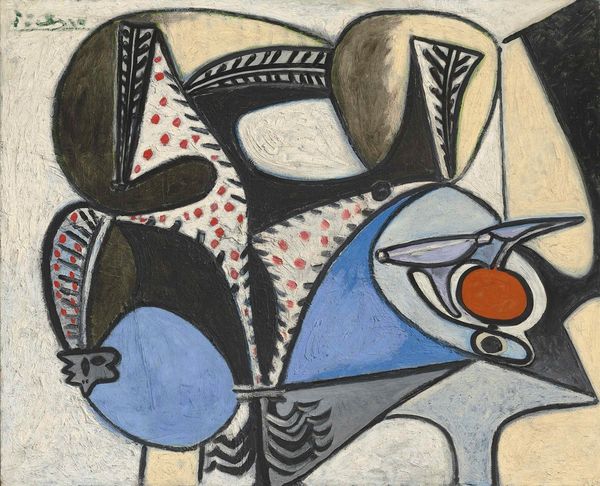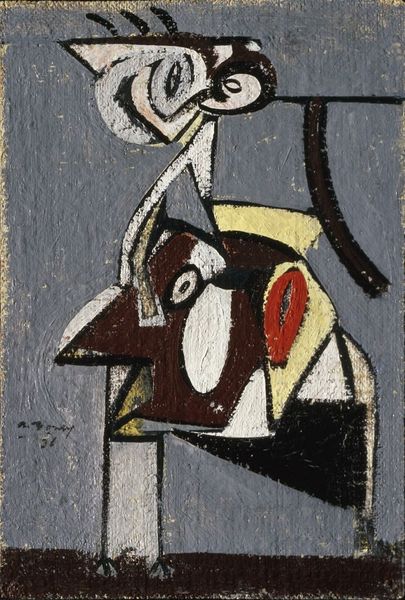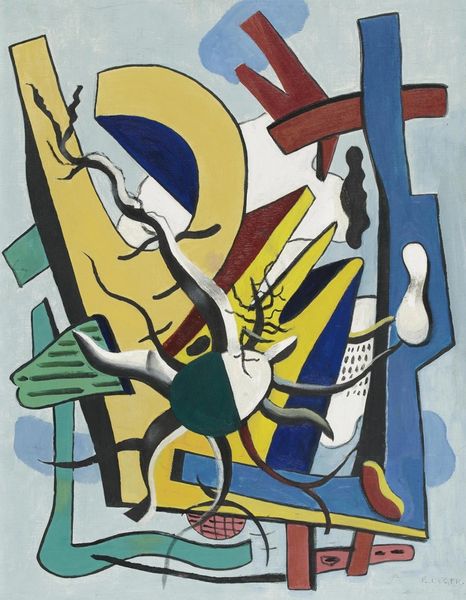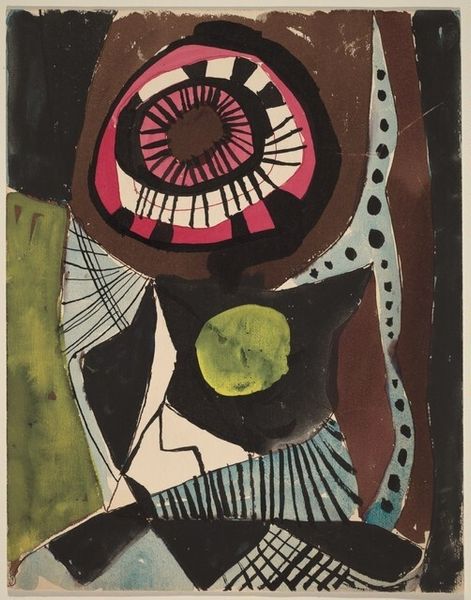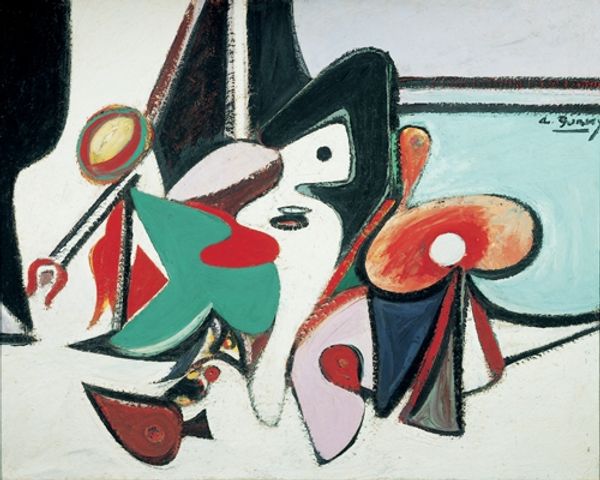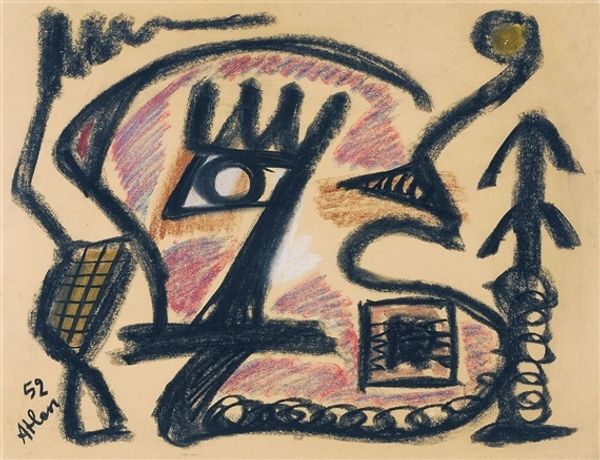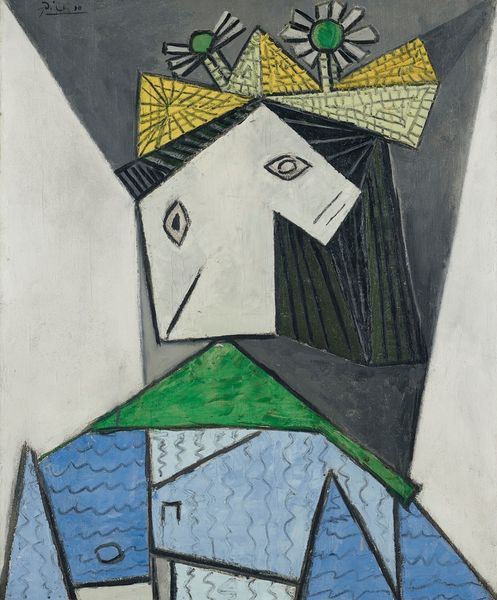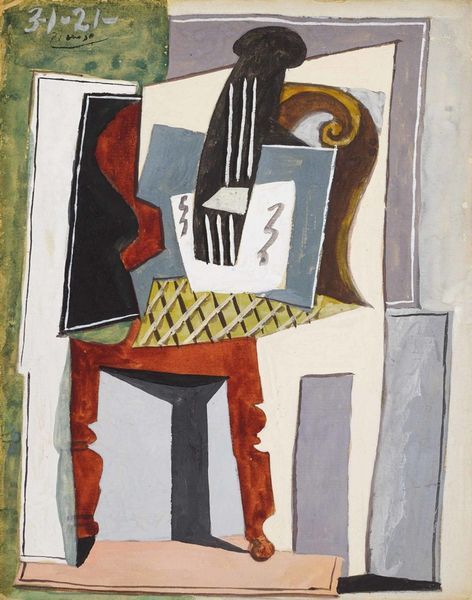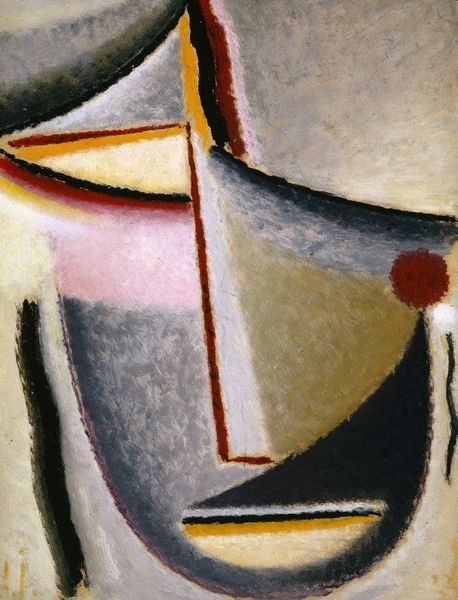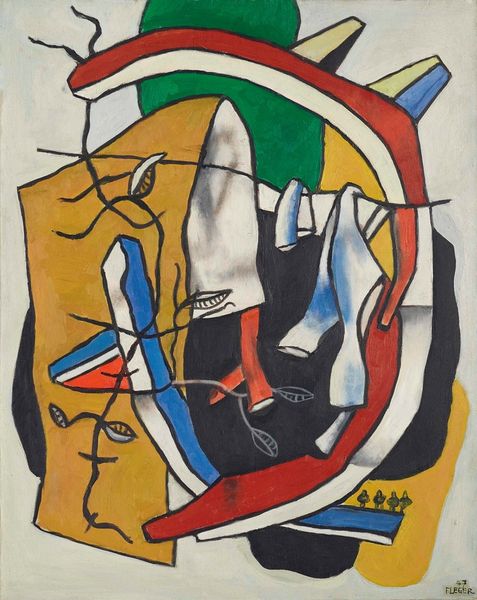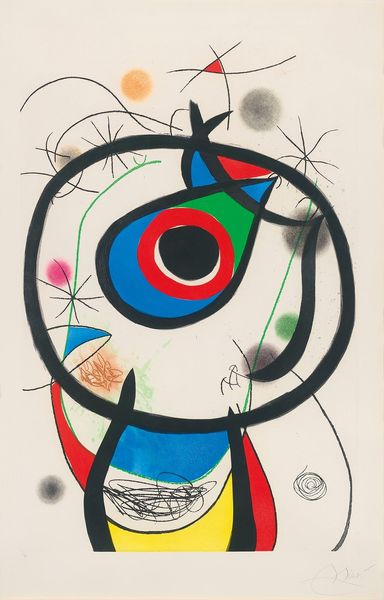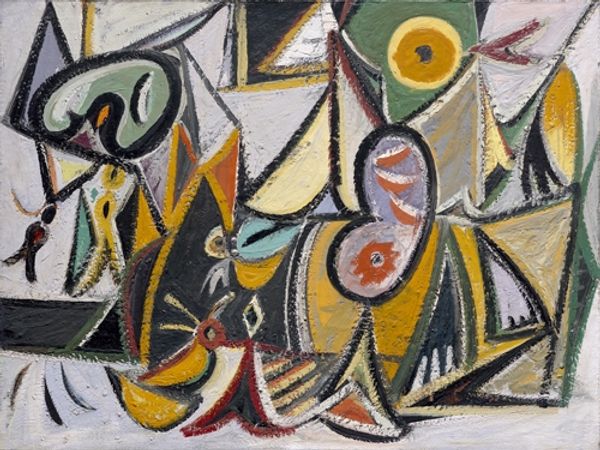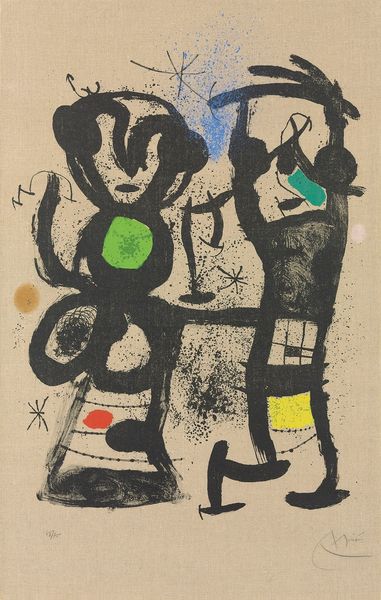
painting, oil-paint
#
portrait
#
painting
#
graffiti art
#
oil-paint
#
caricature
#
pop art
#
geometric
#
biomorphic
#
abstraction
#
surrealism
#
portrait art
Dimensions: 78.7 x 62.6 cm
Copyright: Public domain
Curator: Arshile Gorky's "Portrait (Head)," dating from 1938, invites us to consider how the human form can be re-imagined. It is held in a private collection. Editor: It strikes me as strangely unsettling. The geometric shapes, the stark colors...it’s a deconstruction of a face, almost a critique of portraiture itself. Curator: Absolutely. Gorky, though deeply influenced by Surrealism at this point, was constantly probing at the boundaries of representation. He was exploring how to access the subconscious through form and color, building on earlier trends of cubism to present the multifaceted nature of experience. This painting exemplifies that ambition through its distorted facial components and overlapping geometry, all placed onto a raw, sandy field. Editor: I’m interested in how Gorky navigates his identity as an immigrant, especially as we approach the second World War. There’s a sense of displacement inherent in this fragmented figure. Is he questioning what constitutes a "portrait" when identity itself feels fractured by historical forces? Curator: That's a vital point. Consider how certain geometric symbols, perhaps unconsciously, evoke cultural narratives of displacement and perhaps even reconstruction after trauma. Note how that open eye stares, holding multiple layers of meanings – maybe that is trauma. Editor: It's that "open eye" that really resonates. It seems to bore through the image to challenge the audience with pressing contemporary anxieties over identity and politics during that turbulent period. There’s definitely that undercurrent of dread. Curator: It holds both private emotion and public anxiety in its strange geometries. And I think those geometric layers hold those symbols up to a brighter light. This portrait invites us to understand not just a face, but also the conditions that shaped it. Editor: It encourages us to contemplate the relationship between the subject of portraiture, art itself, and larger sociopolitical forces during a chaotic and transformational period in the world. Curator: A great meditation to consider, I'm grateful we have a chance to delve deeper here together. Editor: Likewise. Hopefully it stimulates further considerations about history, abstraction and symbolism when interpreting the artwork.
Comments
No comments
Be the first to comment and join the conversation on the ultimate creative platform.
